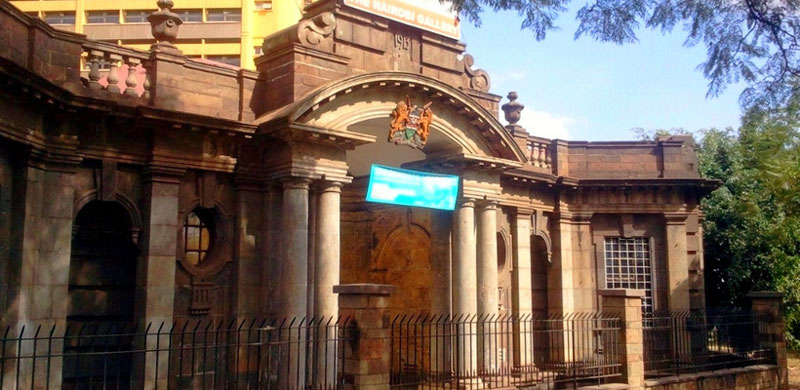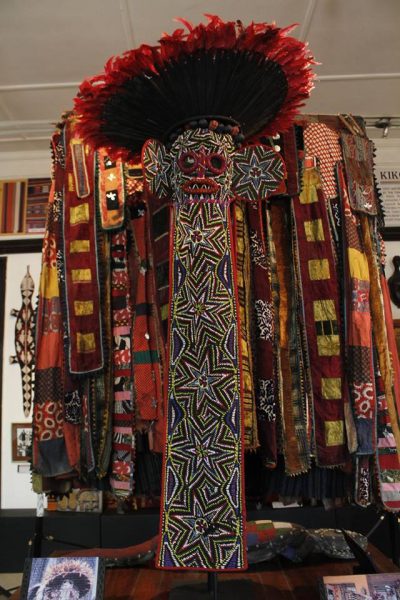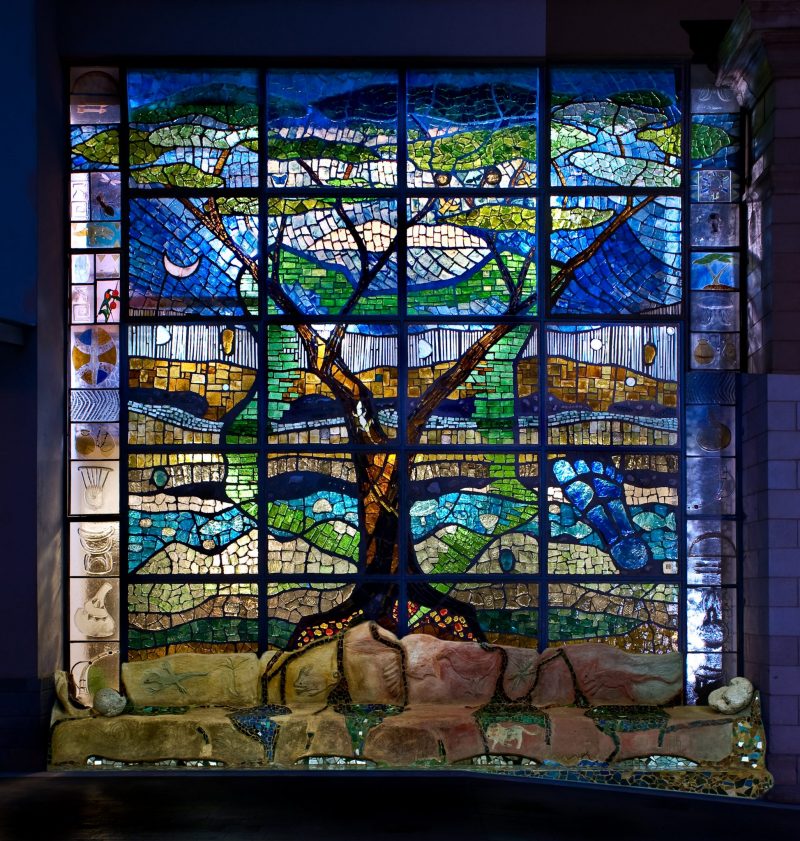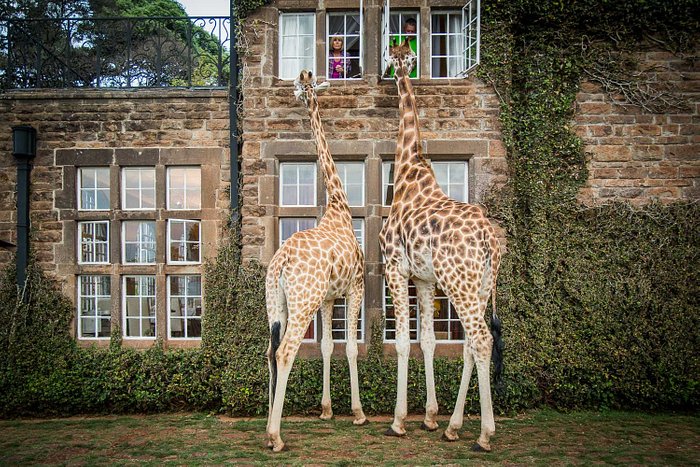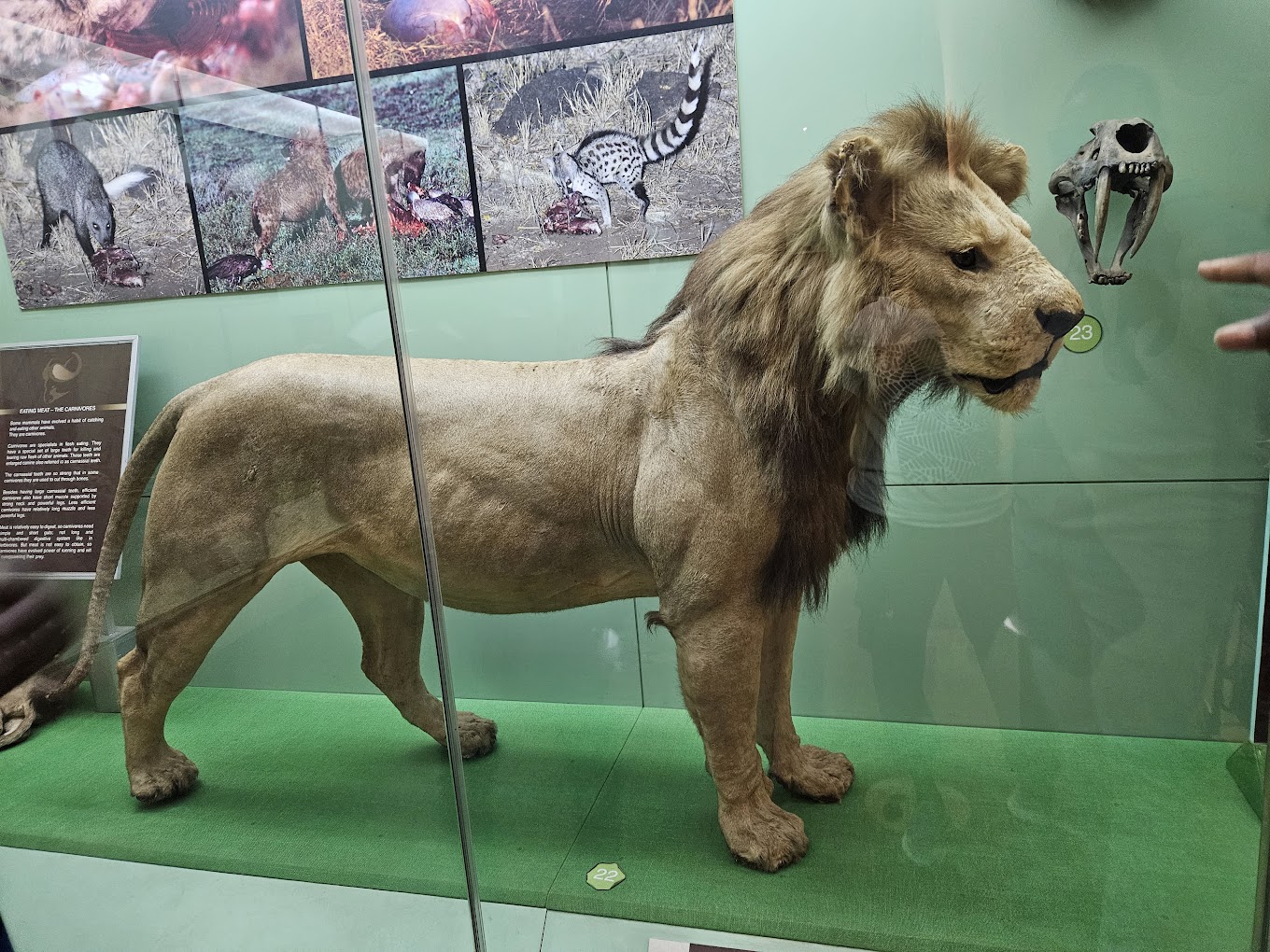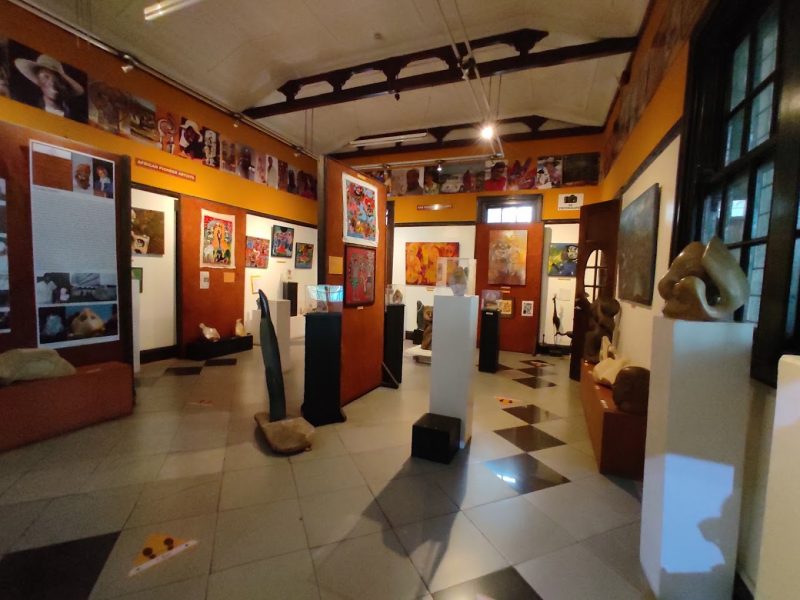Nairobi Gallery Talks Volumes About Kenya
In the heart of the beautiful and buzzing city of Nairobi in Kenya, there sits unobtrusively a historical site that hardly anyone notices. It may seem like a decrepit and dilapidated old building. Just the look of the building can deter one from entering it. But the building talks volumes about the shaping of Kenyan history and culture of the people. The building is none other than the Nairobi gallery. It sits beneath the Nyayo house tower at the intersection of Kenyatta avenue and Uhuru highway. The Nairobi gallery is unique in its historical significance and connection to Nairobi’s history. Few buildings in Nairobi can match it.
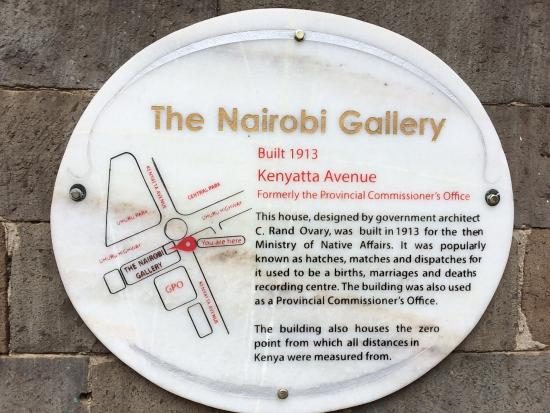
The Point Zero is an octagonal atrium built in the center of Nairobi National Gallery Source Credit: TripAdvisor
Point Zero location
The year 1913 saw the construction of the building in the center of Nairobi that today houses Nairobi Gallery. The location was Point Zero. The colonial government measured the distances to all areas of the country from this point. Point Zero is an octagonal atrium in the center of the gallery. A Clay Vessel by Lady Magdalene Odundo graces the entrance of the building. Lady Odundo was a renowned Kenyan ceramist. For her works, she received from the Queen of England the distinction of OBE and the only Kenyan to have received it. Today a gourmet café by the same name is an exciting item of the Gallery.
Colonial government office
The Nairobi Gallery building originally served as the office of the Colonial Government where births, marriages, and deaths were recorded and attested. Hence the white settler community fondly nicknamed and referred to it as Hatches, Matches, and Dispatches. Two of the rooms in the gallery have two old safes for storing these documents recorded there. The Gallery treats the visitors with a rare glimpse into the past colonial history of the country dating back more than a century. The doors, windows, and beams in the ceiling are of wooden frames reflecting the flavor, aura, and ambiance of the early white European settlers.
Heritage of Africa
The Nairobi Gallery serves as an Art and History Gallery under the auspices of the Museums of Kenya. It is an inspiring national monument. It features art not only from Kenya but also from East Africa and the continent at large. The collection showcases ancient paintings, sculptures, and artifacts of daily use from African cultures. It highlights the creativity and organization of these cultures. It also shows the evolution of the cultures as they came into contact with different civilizations. The gallery does true justice to the heritage of Kenya by exhibiting African art and culture in all its splendor.
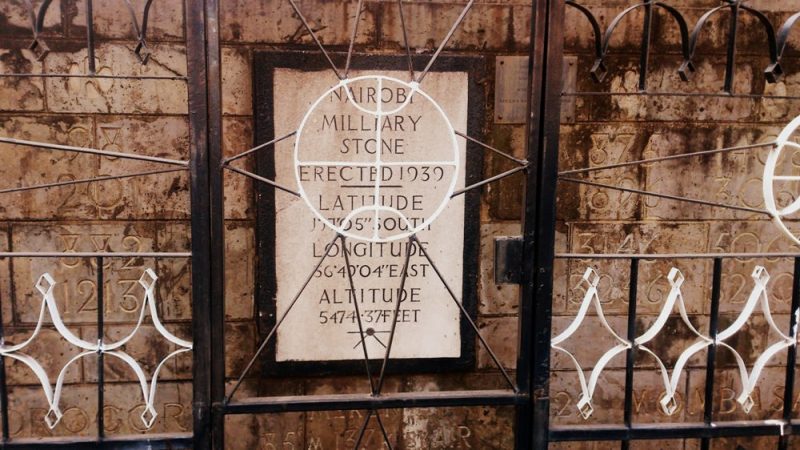
In 1939, a memorial monument of Douglas Galton-Fenzi known as the Galton-Fenzi Memorial was erected at Nairobi Gallery Source Credit: Thee Agora
Douglas Galton Fenzi
In 1939, a memorial monument of Douglas Galton-Fenzi known as the Galton-Fenzi Memorial, also called the Nairobi Military Stone, was erected at Nairobi Gallery. It was an attempt by the colonial government to make Point Zero in his honor. Douglas Galton-Fenzi was an automobile enthusiast and an adventurer. His driving passion made him the first man to drive between the city of Nairobi and Mombasa. Douglas is also credited to be the Founder of East Africa’s first automobile association in 1919. His monument could not fit in the Gallery atrium. Hence, they placed it a few meters away beside the GPO building.
Joseph Zuzarte Murumbi
A history of Nairobi Galley is incomplete without mentioning the name Joseph Zuzarte Murumbi. Joseph Murumbi was the second Vice President of Kenya after its independence between May 1965 and December 1966 and a key player in shaping the history of Kenya. He was born to a Masai woman and a Goan businessman in 1911. The independence hero Pio Gama Pinto was his best friend. Shortly after his best friend’s assassination, Murumbi resigned as vice president. Having started a collection of African art in the early 1950s, he turned his attention to growing the collection of artifacts, jewelry, postage stamps, and books.
Collection of artifacts
Joseph Murumbi, along with his wife, Sheila Murumbi, opened Africa’s first Pan African Gallery in 1972 with Alan Donovan who was his business partner. In 1976 he sold a huge part of the collection to the Kenyan government at throwaway prices. He passed away on the 22nd of June 1990 and his wife in 2000. Since they died without leaving a will, the government had planned to send the collection to England. But Alan Donovan managed to halt the exportation of Murumbi’s precious artifacts. Eventually, the National Museums of Kenya and the Kenya National Archives signed a deed to exhibit and maintain the collections for visitors and locals to enjoy.
Collection becomes centrepiece
In June 2013, the establishment moved part of the Murumbi African Heritage Collection to Nairobi Gallery from the Kenya National Archives. It soon became the centerpiece of the works exhibited at the Gallery. Since then the Gallery has become its official home. It now houses the famous Murumbi African Heritage Collection, an outstanding private collection amassed by Joseph Murumbi. In one of the rooms in the Gallery, artifacts from the personal life of Joseph and Sheila Murumbi are also on display. Coincidentally during Murumbi’s time as Foreign Minister, he tried to make the same building a National Art Gallery. Hence it is a suitable site.
Unsung National Monument
Today Nairobi Gallery continues to contribute to the country’s cultural development. The building is a National Monument hosting numerous exhibitions of works by both foreign and local artists. It is part of the historical tour of the city of Nairobi. Visitors to this historical site use an innovative GPS audio walking tour app published by VoiceMap. The formidable structure of the building is most certainly an undervalued piece of Kenyan history and culture. The authorities would gain nothing by not giving it its deserved attention and in fact, would only conceal its true splendor. Kenya Tourism Board can also be instrumental in reviving its real value.
5 Frequently Asked Questions About Nairobi Gallery
To receive a colourful digibook about Museum with videos, images and text, please fill out the following form or simply email us on safaris@safari-center.com

